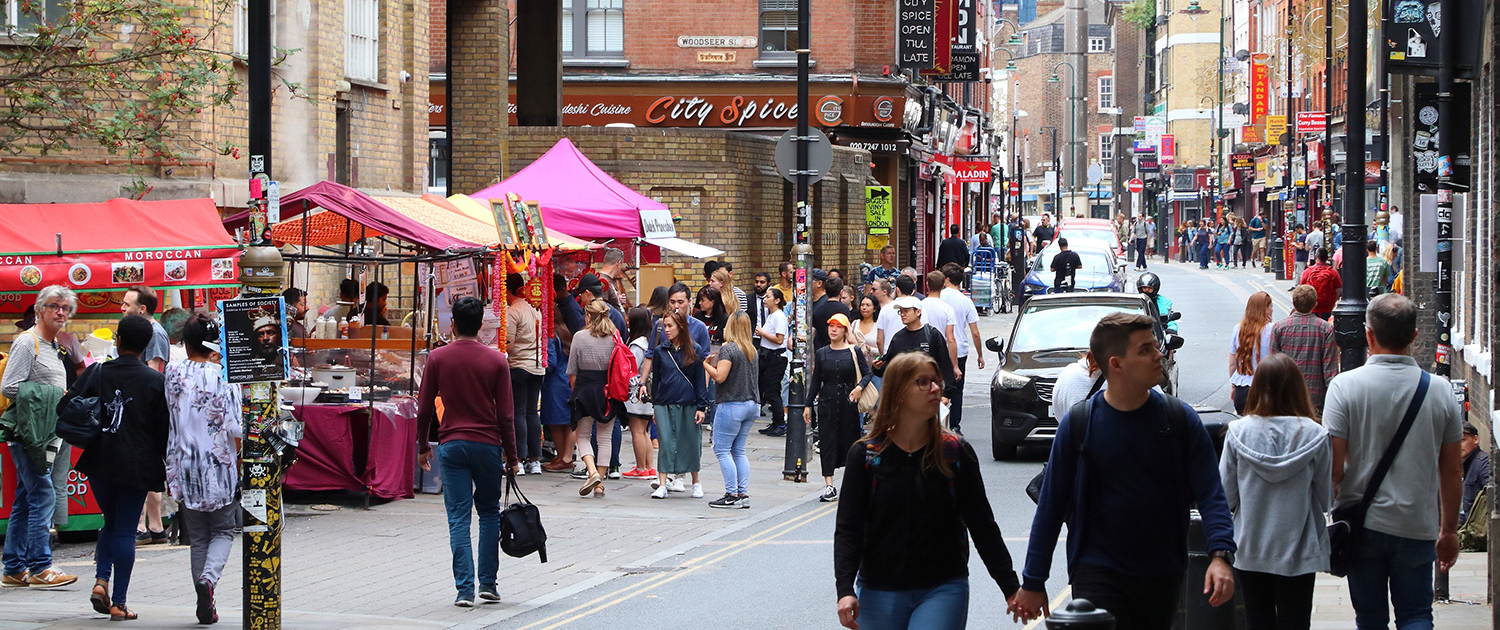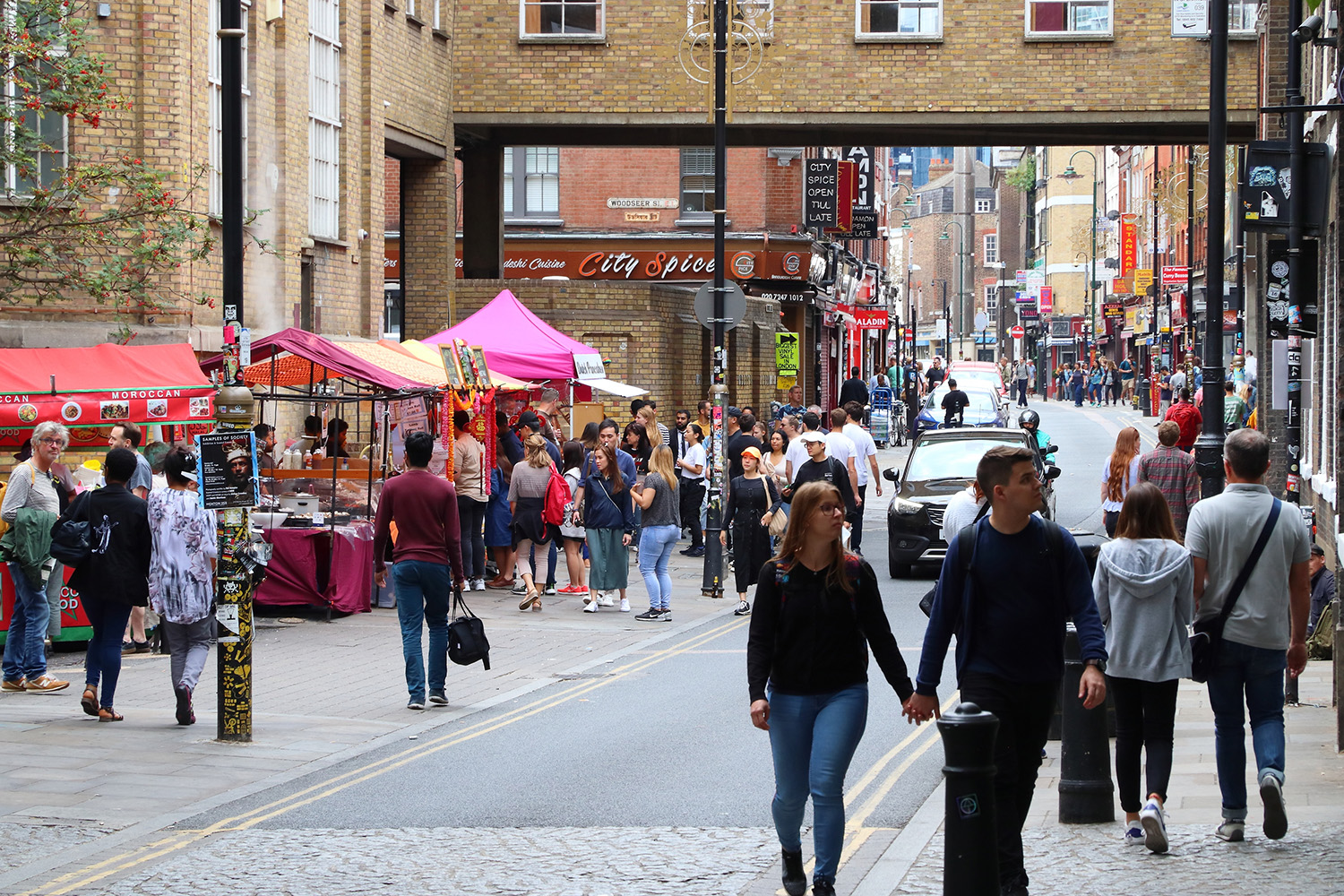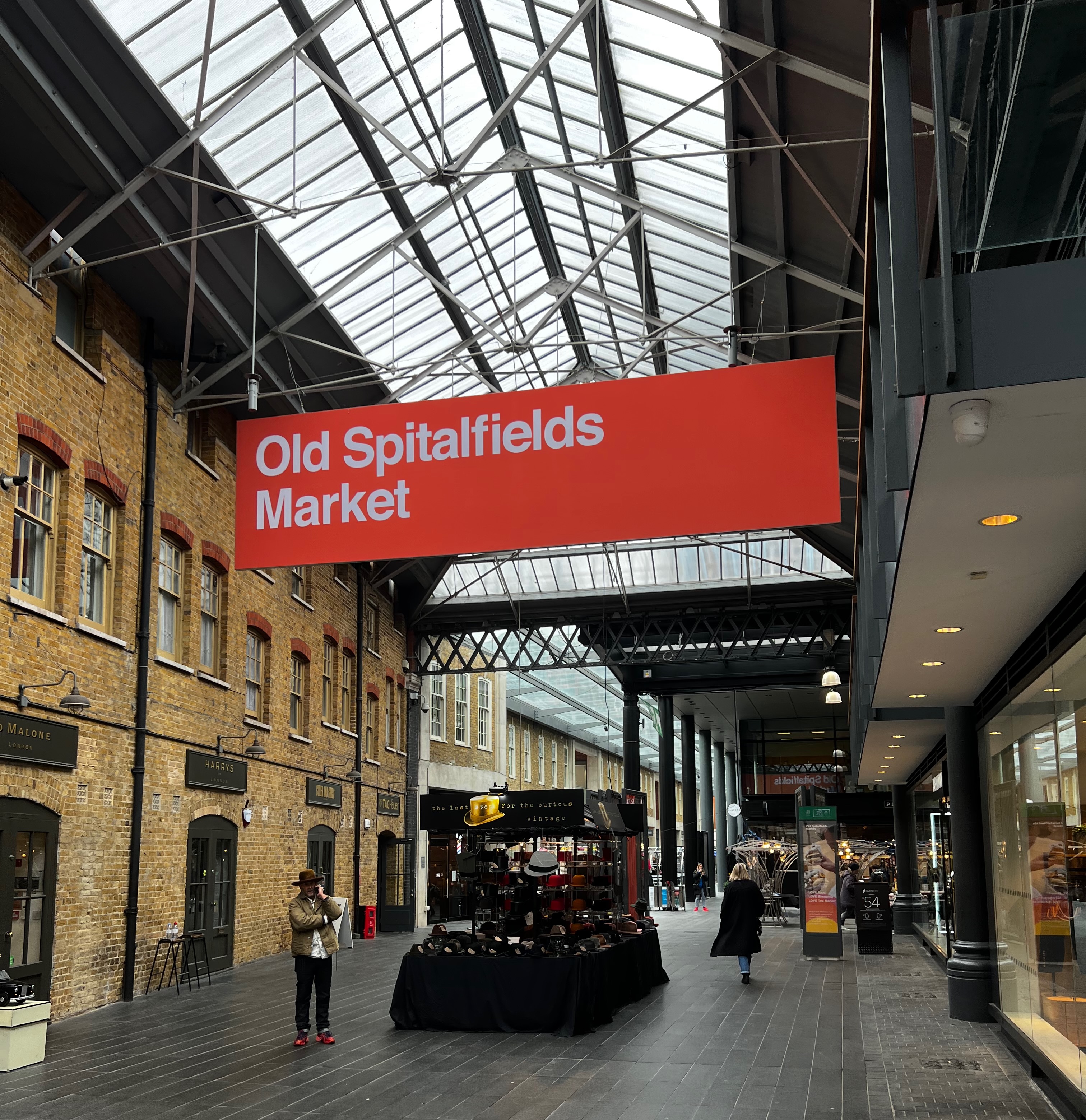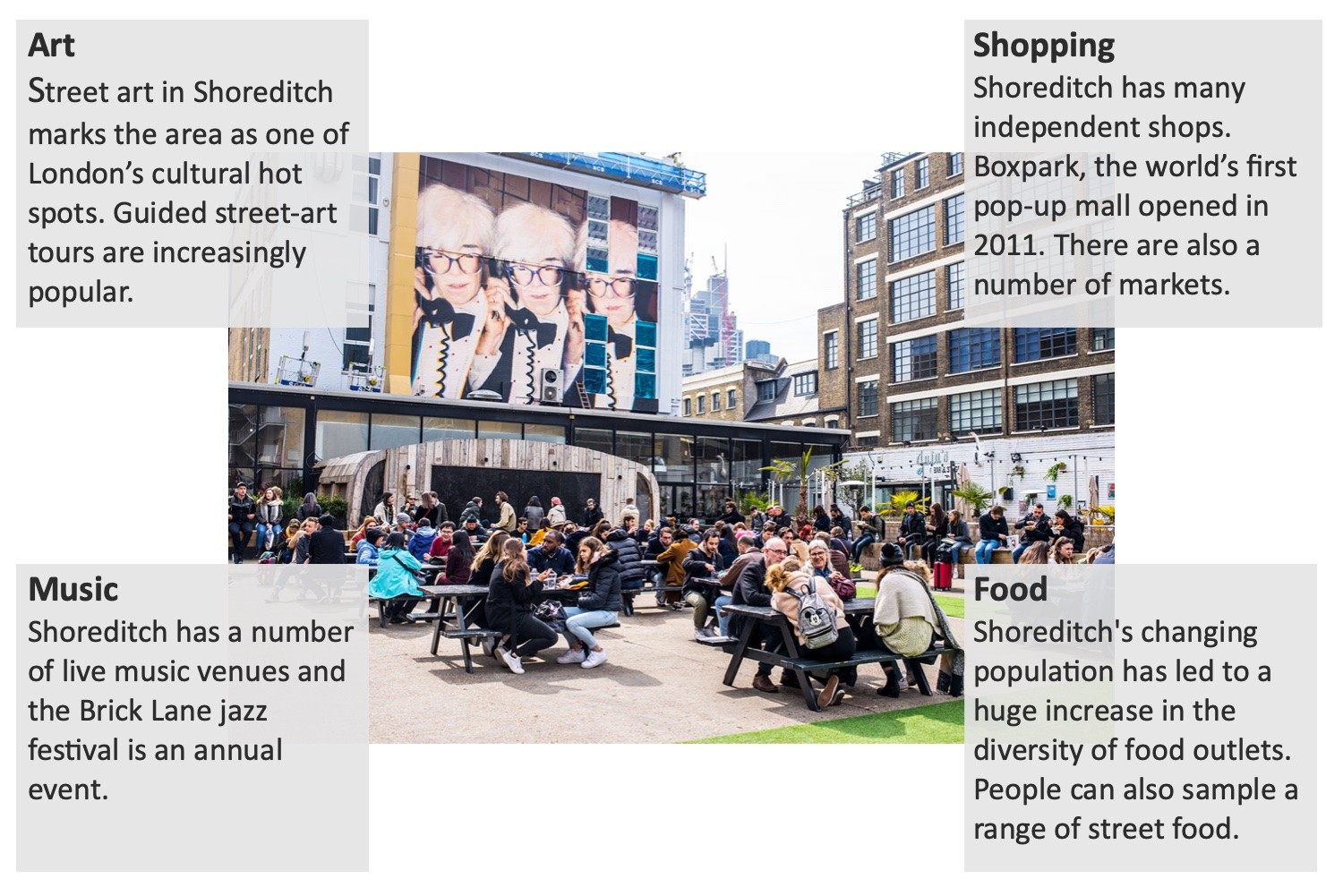Shoreditch is an example of how urban change has created a cultural mix, recreation, and entertainment opportunities. This is one of a collection of four case studies covering social, economic and environmental opportunities resulting from urban change in London.
Case Study – Shoreditch, London
Shoreditch is a district in the East End of London, close to the city centre. It is typical of the sort of changes that have happened around London and other UK cities.
Shoreditch was once a run-down inner-city area, with ageing factories and warehouses that had ceased operations, prompting people to leave the vicinity. In their place, many Bangladeshi immigrants moved in, particularly around Brick Lane.
Today, the area has a diverse ethnic population.
What is the cultural mix found in Shoreditch?
Shoreditch boasts a diverse cultural blend and is almost unrecognisable from three decades ago. The old industrial structures have transformed into residential flats and office spaces. Additionally, pubs and bars have been revamped and repurposed into restaurants and art galleries. New job opportunities have emerged in creative industries, such as web design, filmmaking, and art, with a concentration around the Old Street roundabout. The rapid influx of hi-tech companies has earned the area the moniker “Silicon Roundabout,” reminiscent of Silicon Valley, California’s tech industry hub where numerous tech giants blossomed. Facebook, Google, and Microsoft have all channelled investments into the Silicon Roundabout region.
What are the opportunities for recreation and entertainment in Shoreditch?
Gentrification has caused a shift in the population of Shoreditch, with older residents and Bangladeshi families leaving due to increasing rents and property prices. In their place, young professionals in industries such as finance and the arts have moved in, changing the neighbourhood’s demographics.
This transformation has brought about a surge in new recreational and entertainment options, making Shoreditch one of London’s liveliest areas. During the day, the bustling cafes cater to the younger crowd, while at night, the clubs and bars enliven the streets. The walls are adorned with graffiti and artwork, which attracts many visitors.
In the mid-2000s, the Spitalfields market site was redeveloped. The new development, known as Spitalfields, is open every day of the week. The popular shopping area hosts various retail brands, street-food stalls, bars and restaurants, and independent traders showcasing handcrafted goods, artwork, fashion, and jewellery. It also hosts public art and events programmes.
Related Topics
Use the images below to explore related GeoTopics.






